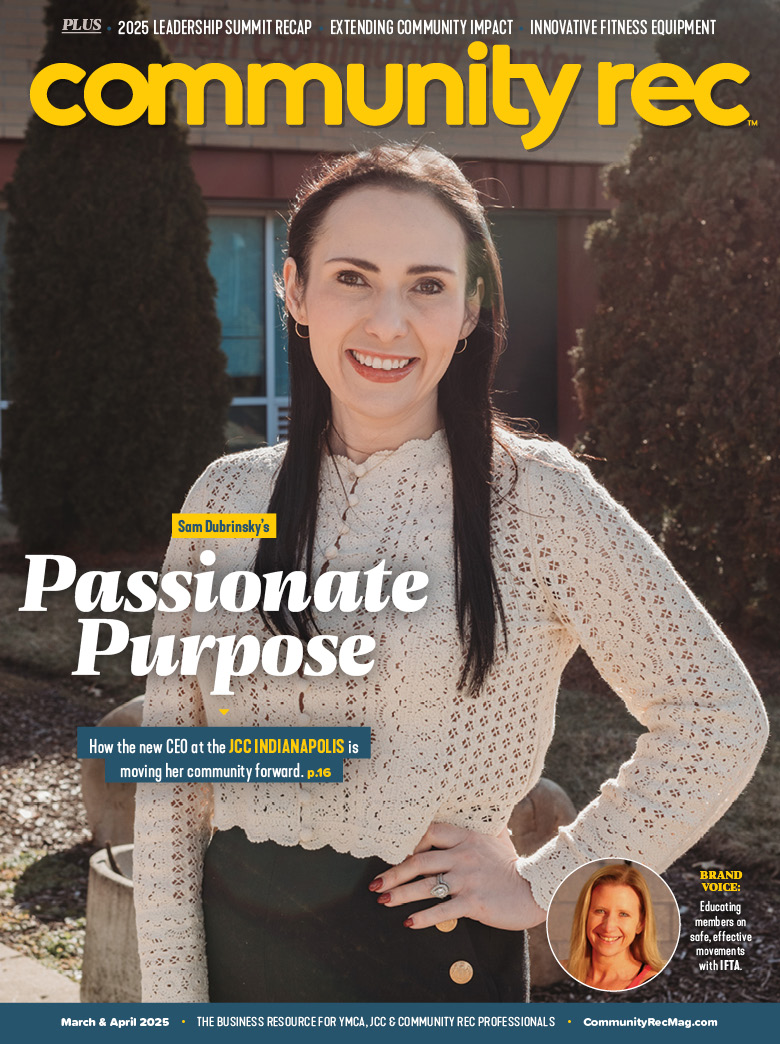Social media is a useful tool to market your program offerings, share upcoming events and post positive messages for your members. But in a time of closed facilities and social distancing, it is vital for your communications team to maximize the effectiveness of your social media posts.
Jonny Eberle, the communications director of the YMCA of Pierce and Kitsap Counties in Tacoma, Washington, said their Y is committed to providing their members with the best experience, even when they can’t physically use their facilities. One way they’ve found success is by sharing group exercise classes on their social media channels.
“When posting classes on social media, it’s important to create a schedule so members know when to tune in,” said Eberle. “It’s also important that instructors are aware of how to film a high-quality video, paying attention to lighting and audio so the at-home exercise experience is as good as what members expect in-person.”
Another facility that has focused on scheduling is the Barshop JCC, located in San Antonio, Texas. The Barshop JCC has created a series of Live Virtual Activities via Facebook Live. They have also ramped up their content from around one post a day to four or five.
“At first, we were just trying to put as much content out as possible, so it was very laissez faire,” said Becker Helton, the marketing and sales manager for the Barshop JCC. “What really helped was sitting down and creating a specific weekly content schedule, of both live and pre-recorded content, to stick to.
Helton went on to say this allowed those managing the social media accounts the ability to set deadlines for the people that are providing them content. The J’s marketing team walked through everyone’s first live video with them to ensure they understood how to do it properly.
Their efforts paid off. “Overall, we have seen total engagement increase 39% on Facebook and page profile views are up 28%,” said Helton. “On Instagram, the numbers are even more striking. Engagement is up 113% and profile views went up 1,376%.”
Vicky Kettner, the marketing and communications director for the YMCA of Greater Kalamazoo in Kalamazoo, Michigan, said the social posts that get the most engagement and reach at her facility are those that offer photography or video with local, familiar faces. “Personal delivery reigns supreme,” she said. “That is important now as we all deal with the impact of isolation.”
Social media, specifically Facebook, has been one of the YMCA of Greater Kalamazoo’s main communication tactics for years, but now more than ever, they are relying on it to share with their constituents, members, donors, partners and the community at large.
Kettner explained the communications team tries to make sure each one of their social media posts contains as many of the right characteristics as possible: relevant, timely, accurate, informative, direct, compassionate, encouraging, motivating, respectful, cheerful and honest.
Additionally, the YMCA of Greater Kalamazoo likes to keep their social media posts diverse. “With multiple programs, different categories of supporters and a wide range of topics, we attempt to stagger the subject matter and create a lineup of posts that alternates topics,” said Kettner. “Having established headlines in all caps preceding each post helps followers determine if they want to read ahead or keep scrolling.”
Like many other facilities, Kettner said all prior social media rules were thrown out. The YMCA of Greater Kalamazoo used to put up two social media posts a day, but now they post as often as needed.
“In March, we tripled our number of posts to address everything that was having an impact on our membership and followers who depend on us for health and wellness, youth development and social responsibility issues,” explained Kettner. “Where in the past this number of posts would have been inconceivable, it has been required to keep up. There is a fine line between overkill and as needed, and we watch that line very closely.”
Overall, Kettner said their Y recognizes there is much to learn as they enter these new uncharted demands and opportunities. They continue to use social media platforms to manage their brand, create awareness, deliver important impact information, and most importantly, stay connected.
Eberle couldn’t agree more. “We have an opportunity to serve our members who are feeling anxious and isolated right now,” he explained. “If we do it well, we believe we can help a lot of people find connections.”










